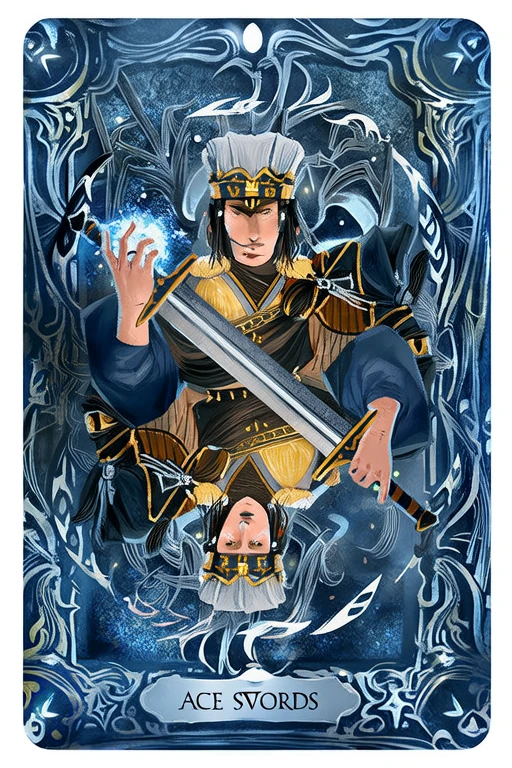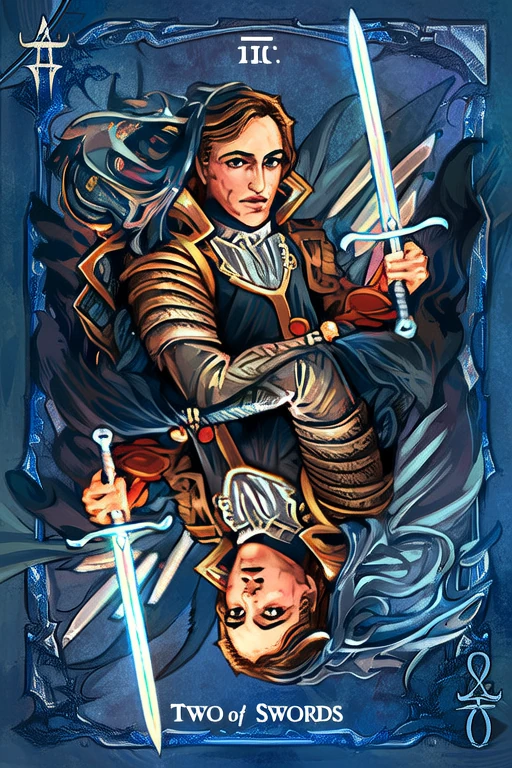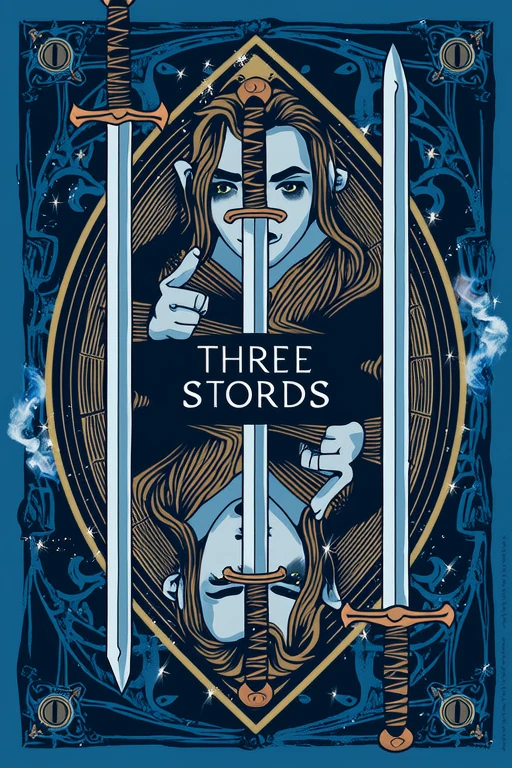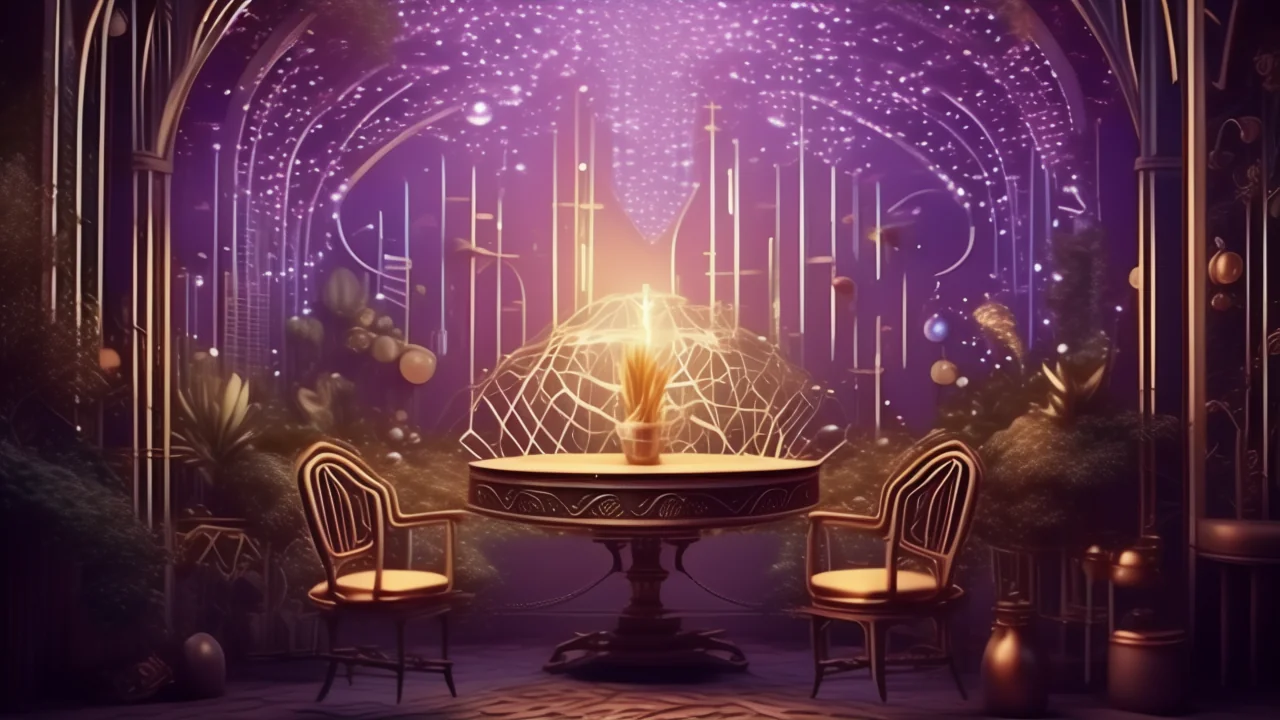
Six of Swords
Discover the deep meaning of Six of Swords with our free AI-powered tarot interpretation. Get instant, accurate readings based on advanced tarot knowledge.
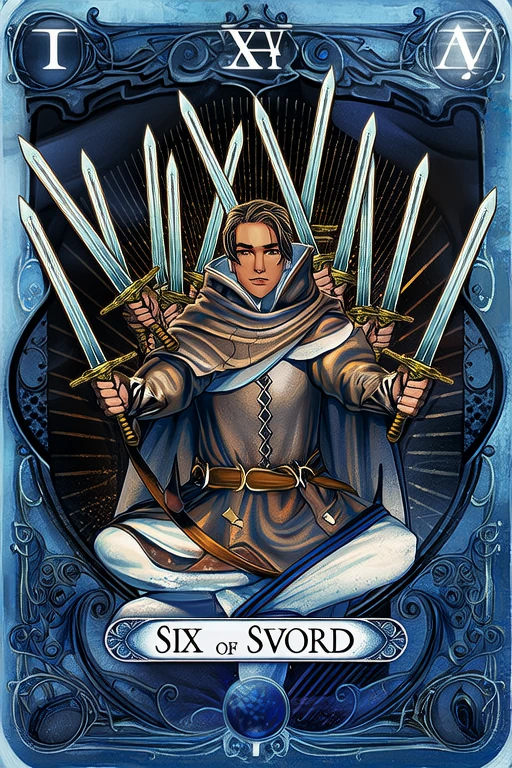
Keywords
Upright Meaning
Transition, leaving behind, moving forward
Reversed Meaning
Emotional baggage, unresolved issues, resisting transition
Full Interpretation
The Six of Swords represents transition, leaving behind difficulties, and moving forward.
In-Depth Analysis
📜 Historical Background
The Six of Swords is one of the 56 Minor Arcana cards in the tarot deck, specifically belonging to the suit of Swords, which corresponds to the element of Air and is traditionally associated with intellect, communication, and conflict. Its origins trace back to early tarot decks used in 15th-century Europe, particularly in Italy and France, where tarot cards were initially employed for playing games before evolving into tools for divination and esoteric study during the 18th and 19th centuries.
One of the earliest known depictions of the Six of Swords appears in the 15th-century Visconti-Sforza Tarot, a hand-painted deck commissioned for the ruling families of Milan. In this version, the card typically shows a figure carrying six swords, often depicted with a sense of purpose or burden. These early representations lacked the narrative depth seen in later decks but established the visual motif of swords as symbols of mental challenges, clarity, and struggle.
During the 19th century, the Hermetic Order of the Golden Dawn and later the Rider-Waite-Smith Tarot (1909), illustrated by Pamela Colman Smith under the guidance of A.E. Waite, transformed the Six of Swords into a more symbolic and psychologically rich image. In the Rider-Waite-Smith version, a woman rows a small boat carrying a child, with six swords visibly embedded in the boat. The scene is set against a calm lake with a distant shoreline, symbolizing a journey away from turmoil toward peace. This imagery drew upon mythological and literary motifs, such as the ferryman of the underworld or the archetypal journey of healing and transition.
Throughout history, the Six of Swords has been interpreted in various ways depending on the cultural and spiritual context. In some European traditions, the card was seen as a harbinger of change or migration, while in more modern esoteric systems, it became associated with emotional healing and intellectual clarity. The evolution of its imagery—from a simple depiction of swords to a complex narrative of departure and hope—reflects the growing emphasis on psychological and spiritual interpretation in tarot.
Culturally, the Six of Swords resonates with themes found in mythology and folklore, such as the journey to the afterlife, the hero’s return, or the soul’s passage through trials. In Celtic and Norse traditions, water is often a symbol of transformation, and the boat journey in the card echoes these ancient beliefs. In modern tarot, the Six of Swords continues to be a powerful emblem of transition, often signifying a necessary departure from the past and the beginning of a new chapter in one’s life.
Symbolism & Imagery
The Six of Swords is rich in symbolic meaning, with each element of the card contributing to its overall interpretation. The most iconic version, found in the Rider-Waite-Smith Tarot, features a woman rowing a boat carrying a child, with six swords visible in the boat and more standing upright in the background. The calm water, distant shoreline, and overcast sky all play into the card’s deeper themes of transition, healing, and moving forward after a period of difficulty.
The six swords themselves symbolize the mind, thoughts, and verbal conflicts. The fact that they are all together in the boat suggests that the person is carrying their mental burdens with them, even as they attempt to leave a difficult situation. This can indicate that while the physical journey may be underway, the emotional or intellectual resolution is still in progress.
Water is a key symbol in this card, representing the subconscious, emotions, and the process of healing. The calm water suggests that the worst of the emotional storm has passed, and the journey is now one of recovery and reflection. The overcast sky may indicate lingering uncertainty or sadness, but the visible shoreline in the distance offers hope and direction.
The child in the boat is often interpreted as a symbol of innocence, vulnerability, or the inner child. The woman rowing the boat can be seen as a guide, healer, or maternal figure helping the child move toward a better place. This dynamic may reflect a need for guidance or support during a transitional period.
In terms of color symbolism, the muted tones of the card suggest a subdued emotional state—perhaps one of quiet determination or weary acceptance. The absence of vibrant colors reinforces the idea of a journey that is not yet complete but is moving in a positive direction.
Numerologically, the number six is associated with balance, responsibility, and care. It often relates to nurturing, domestic harmony, and restoration. In the context of the Six of Swords, this reinforces the idea of moving toward a more stable and peaceful future after a period of upheaval.
When the card appears upright in a reading, it generally signifies a time of transition, healing, and moving forward after a difficult experience. It may indicate that the worst is over, and the individual is beginning to leave behind pain, conflict, or confusion.
Reversed, the Six of Swords can suggest delays in healing, an unwillingness to let go of the past, or emotional baggage that continues to weigh heavily. It may also point to a journey that is not yet ready to begin or a return to a previous situation.
The Six of Swords is often compared to the Chariot in the Major Arcana, both representing movement and progress. However, while the Chariot signifies triumph and control, the Six of Swords emphasizes healing, transition, and the need for emotional support.
Psychological Insights
From a psychological perspective, the Six of Swords can be interpreted through the lens of Carl Jung’s theories on the unconscious, archetypes, and individuation. The card often represents the process of moving from a state of emotional turmoil or mental confusion toward clarity and healing. The journey depicted in the card mirrors the inner journey of integrating shadow aspects, confronting past traumas, and emerging with a renewed sense of self.
Jungian archetypes such as the Child, the Guide, and the Journeyer are all present in the Six of Swords. The child symbolizes innocence, vulnerability, and the need for protection, while the woman rowing the boat embodies the nurturing or wise guide archetype—someone who provides support and direction during a time of transition. This dynamic reflects the therapeutic relationship or the inner process of self-guidance and emotional healing.
In modern life, the Six of Swords serves as a reminder that change is often necessary for growth, even when it is uncomfortable. It may appear during times of transition—such as leaving a job, ending a relationship, or relocating—suggesting that although the past was painful, moving forward is essential for emotional well-being. It encourages individuals to seek support, whether through friends, family, or professional counseling, rather than trying to carry burdens alone.
For personal growth and self-awareness, the Six of Swords invites reflection on what needs to be left behind and what lessons have been learned from past experiences. It encourages individuals to acknowledge their emotional wounds and to seek resolution rather than suppressing or avoiding them. This card often appears when someone is ready to release old patterns or beliefs that no longer serve them, making space for new perspectives and healing.
In therapeutic and counseling settings, the Six of Swords can be a powerful tool for discussing emotional transitions, grief, and recovery. It can help clients visualize their journey from pain to healing and provide a framework for discussing necessary changes. Counselors may use the card to explore themes of letting go, seeking support, and embracing new beginnings.
In modern spiritual practices, the Six of Swords is often associated with water rituals, meditation, and dreamwork. It is seen as a card of psychic cleansing and emotional purification, encouraging individuals to release negative thoughts and embrace a more peaceful state of mind. Whether used in tarot readings, journaling, or guided visualization, the Six of Swords serves as a gentle reminder that healing is a process, and sometimes, the journey itself is the destination.
Correspondences
The Six of Swords corresponds to the planet Mercury in the astrological system of tarot, linking it to communication, intellect, and mental clarity. Mercury’s influence suggests that the transition indicated by this card involves a shift in thinking, the resolution of misunderstandings, or the need for clear communication during a period of change.
Astrologically, Mercury also rules the signs of Gemini and Virgo, both of which are analytical and detail-oriented. This reinforces the Six of Swords’ emphasis on mental processes, decision-making, and the importance of thoughtful reflection during times of transition.
In terms of gemstones and crystals, selenite and aquamarine are closely associated with the Six of Swords. Selenite promotes mental clarity and spiritual purification, aiding in the release of emotional blockages. Aquamarine, a stone of courage and communication, supports emotional healing and helps soothe anxiety or fear associated with change.
Herbs and essential oils that resonate with this card include lavender, chamomile, and sage. Lavender promotes calm and relaxation, chamomile aids in emotional healing and restful sleep, and sage is used for clearing negative energy and facilitating spiritual transitions.
The Six of Swords is linked to the element of Air, reinforcing its connection to thought, communication, and intellectual processes. It is also associated with the season of autumn, a time of harvest and letting go, symbolizing the natural cycle of release and renewal.
In energy work, the Six of Swords aligns with the Throat Chakra (Vishuddha), which governs communication, self-expression, and truth. Balancing this chakra can help individuals articulate their thoughts and emotions more clearly during periods of transition.
Numerologically, the number six is associated with harmony, responsibility, and care. It often reflects themes of nurturing, domestic stability, and the need for emotional support. In the context of the Six of Swords, this number emphasizes the importance of seeking balance and emotional healing after a difficult experience.
These correspondences collectively support the Six of Swords’ core message: that healing, communication, and mental clarity are essential during times of transition, and that seeking support and letting go of the past are key steps toward inner peace.
❓ Frequently Asked Questions
### Common Questions About the Six of Swords in Divination
**What does the Six of Swords mean in a tarot reading?** In a reading, the Six of Swords typically signifies a journey, transition, or healing process. It often indicates moving away from a difficult situation toward a more stable or peaceful future. It may also suggest emotional recovery or the need for mental clarity after a period of confusion.
**Is the Six of Swords a positive or negative card?** While the Six of Swords is not inherently negative, it acknowledges that a challenging period has occurred. However, it is generally seen as a positive omen, signaling that healing and progress are underway. It reassures the querent that they are on the path toward resolution and emotional stability.
**What does the Six of Swords mean in love and relationships?** In a love reading, the Six of Swords may indicate moving past relationship difficulties or emotional wounds. It could suggest a need for communication or a transition in the relationship, such as a new phase or healing after a conflict. If reversed, it might warn against lingering emotional baggage or an unwillingness to move forward.
**What does the Six of Swords mean in career and finance?** In a career context, this card often points to a transition—such as a job change, promotion, or shift in responsibilities. It may indicate that a difficult period at work is ending, and a more stable phase is beginning. In financial readings, it can suggest recovery from losses or a necessary change in financial strategy.
### New Beginner Misconceptions and Clarifications
A common misconception is that the Six of Swords always means a physical journey. While it can indicate travel, it more often refers to an emotional or mental transition. Another misunderstanding is that the card signifies an immediate resolution, but it actually represents a process that is still unfolding.
### Professional Reading Techniques and Spreads
The Six of Swords works well in spreads that focus on change, healing, and decision-making. In a three-card spread, it often represents the present situation—moving from the past toward the future. In a Celtic Cross, it may indicate a current transition or the need to release old burdens.
### How This Card Interacts with Other Cards
When paired with The Chariot, the Six of Swords reinforces the theme of movement and progress. With The Hanged Man, it may suggest a necessary pause before moving forward. In combination with The Tower, it can indicate healing after a sudden upheaval. With The Empress or The Star, it suggests emotional support and renewal.
### Practical Advice for Interpretation in Different Contexts
When interpreting the Six of Swords, consider the surrounding cards and the querent’s current life situation. Ask questions like: What needs to be left behind? What lessons have been learned? Who can offer support during this transition? Encourage the querent to view the journey as part of their healing and growth process.
Practical Readings
Love Reading – Free • Online • AI • Instant • Accurate
In love, Six of Swords upright: Transition, leaving behind, moving forward. Reversed: Emotional baggage, unresolved issues, resisting transition.
Career Reading – Free • Online • AI • Instant • Accurate
For career, Six of Swords upright: Transition, leaving behind, moving forward. Reversed: Emotional baggage, unresolved issues, resisting transition.
Yes‑No Reading – Free • Online • AI • Instant • Accurate
As a quick yes‑no: upright tends toward “yes”, reversed leans “no”—interpret within your question’s context.
FAQ
What does Six of Swords mean in tarot?
Six of Swords represents transition, leaving behind, moving forward. This card encourages The Six of Swords represents transition, leaving behind difficulties, and moving forward.
What is Six of Swords reversed meaning?
When Six of Swords appears reversed, it signifies emotional baggage, unresolved issues, resisting transition. Consider areas that may require adjustment or release.
Is Six of Swords a positive card?
Six of Swords is generally considered a neutral to positive card, representing transition, leaving behind, moving forward.
What should I do if I draw Six of Swords?
If you draw Six of Swords, focus on transition, leaving behind, moving forward. Align actions with the card’s upright energy.
How do I interpret Six of Swords in a love reading?
In love readings, Six of Swords suggests transition, leaving behind, moving forward in relationships. Consider how transition and leaving behind apply to your situation.
What does Six of Swords mean in a love reading?
In love, Six of Swords points to transition, leaving behind, moving forward when upright and emotional baggage, unresolved issues, resisting transition reversed. Reflect on relational balance & authenticity.
How is Six of Swords interpreted in career?
For career, Six of Swords upright highlights transition, leaving behind, moving forward while reversed warns of emotional baggage, unresolved issues, resisting transition—adjust planning & execution.
What is the financial meaning of Six of Swords?
Financially, Six of Swords suggests transition, leaving behind, moving forward potential; reversed indicates emotional baggage, unresolved issues, resisting transition—use prudent pacing.
Is Six of Swords a yes or no card?
Six of Swords is generally a context-dependent when upright; reversed leans toward hesitation or NO—apply to the nuance of your question.
References
References
- Encyclopaedia Britannica – Tarot
Historical overview and cultural context of tarot cards.
- Wikipedia – Tarot
General reference on tarot history, structure, and usage.
- Biddy Tarot – Tarot Card Meanings
Widely cited interpretations and learning resources.
- Labyrinthos – Tarot Card Meanings
Educational articles on major and minor arcana.
